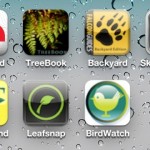 The last few years have seen a number of app based citizen science projects that have attempted to solicit interest in nature and the environment.
The last few years have seen a number of app based citizen science projects that have attempted to solicit interest in nature and the environment.
Some have achieved considerable success, but a recent paper from a team of Oxford University academics suggest that the potential of such apps is barely scratching the surface.
The researchers looked through all of the nature related apps in the Google Play store, with approximately 6,300 falling into this category.
Of these, a tiny proportion were for anything ‘worthwhile’. Just under 4% were for visitor attractions, with just 0.5% covering any kind of citizen science type project.
That left a majority offering various ring-tones, games and personalization services.
Untapped potential
It suggests that conservation organizations are failing to tap into the potential of apps to engage with their audience.
“Sadly, our study suggests that, to date, conservation organisations are not harnessing the full potential of apps,” the authors say.
When they delved deeper, it emerged that apps for visitor attractions tended to have the most engaging functionality. It was common for GPS and compass functionality to be utilized to aid visitors with navigation and the recording of observations.
Sadly, of the apps that had observation sighting functionality, a tiny fraction of those then allowed users to upload the sighting to a biodiversity monitoring scheme.
When it came to the citizen science apps, most of these were focused on recording a particular species. iBat (Indicators Bats Programme for the Zoological Society of London) and New Forest Cicada Hunt (University of Southampton), which integrates crowd sourcing, sensor capabilities, and super computer power, had the greatest functionality, according to the study.
Zooniverse also scored highly, both no doubt for the excellent work it does with Galaxy Zoo et al, and for the fact that it’s based at the same university as the authors.
“The ability of apps to record and transmit casual, geo-located, nature observations creates real possibilities to transform conservation science. The public could help in gathering data, and they in turn could become far more excited about the natural world. Sadly, our study suggests that, to date, conservation organisations are not harnessing the full potential of apps. As most people own a mobile phone today, the app – though a small device – is a major way conservationists could be reaching a huge audience with transformative possibilities,” the authors say.
If organizations wish to go further with mobile, the authors suggest that working closely with their local university could help them to achieve that.
“Greater collaboration with university-based information engineers and computer scientists could revolutionise the potential of nature-based apps, increasing both their functionality and usefulness in helping conservationists,” they conclude.